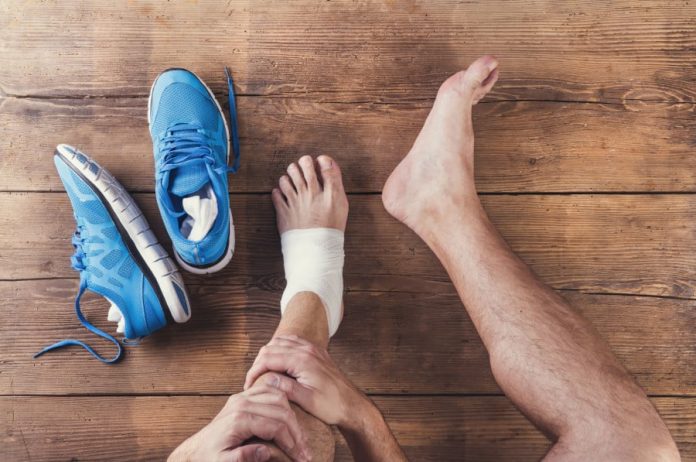Keeping active through sports is beneficial to your physical and mental health. However, without proper warm ups or handling of sports equipment, physical injuries are bound to happen.
according to Mr Lim Hun Teck, Principal Physiotherapist, Raffles Rehabilitation Centre
With that said, sports injuries can happen to even the most seasoned athletes. It is important to understand and be able to identify common sports injuries so that you know how to avoid or prevent aggravating the injury.
This article will cover common sports injuries such as sprains and strains, knee injuries, Achilles tendon injuries, fractures, and joint dislocations.
What is the difference between sprains and strains?
Sprains are tears to the ligaments, which are the connective tissues that attach one bone to another. Sprains are caused by trauma such as a fall or blow to the body that knocks a joint out of position and can range from a first degree sprain (minimally stretched ligament) to a third degree sprain (a complete tear).
The ankles, knees and wrists are areas of the body that are most vulnerable to sprains. Signs of a sprain include:
Varying degrees of tenderness or pain
Bruising
Swelling
Inflammation
Inability to move a limb or joint
Joint looseness
Strains are pulls or tears of muscles or tendons (tissues that attach the muscles to the bones). These acute and noncontact injuries are usually caused by overstretching or over contraction.
Symptoms of a strain include:
Pain
Muscle spasm
Loss of strength
Severe strains that are not treated professionally can cause damage and loss of function.
Knee Injuries
The knee is the most commonly injured joint as it holds together the two longest bones of the body and the entire bodyweight when walking, running or jumping.
There are various types of knee injury, affecting the knee bones, ligaments, tendons or cartilage.
Mild knee injuries include:
Runner’s knee – pain or tenderness on the sides and below the knee
Iliotibial band syndrome – pain on the outer side of the knee
Tendinosis – degeneration of a tendon
They can also result from a traumatic injury like a blow to or twist of the knee; improper landing after a jump; from running too much, or overuse of the knee tissues.
Another common injury amongst sports athletes is the tearing of the anterior cruciate ligament (ACL), which is triggered by sudden stops and changes in direction, such as basketball, soccer, tennis and volleyball.
Achilles Tendon Injuries
The Achilles tendon is one of the longer tendons in your body, stretching from the bones of your heel to your calf muscles.
Many Achilles tendon injuries are cases of tendonitis (inflammation or irritation of a tendon), in which the tendon becomes swollen and painful. Besides middle and long distance runners, Achilles tendon injuries are also common amongst middle-aged “weekend warriors” who may not exercise on a regular basis, and engage in intense workouts only over the weekend or in random spurts.
Overuse, misalignment, improper footwear, medication side effects, and/or accidents can also contribute to the same Achilles tendon injury. Notably, men over 30 years old are prone to Achilles tendon injuries.
In more severe cases, too much force on the tendon can cause it to tear partially or rupture completely
Fractures
A fracture occurs when a bone is cracked or broken and there are two main types of fractures – acute fractures and stress fractures.
An acute fracture occurs from a quick one-time injury to the bone, and it can be simple, where there is one crack in the bone with little damage to the surrounding tissue; or compound, where there are multiple cracks and an open wound with the broken bone sticking out.
Most acute fractures are emergencies and require immediate attention. This is especially so for fractures that result in an open wound, as there is a high risk of infection.
A stress fracture happens when there is repeated stress on the bone over time. Stress fractures occur mostly during sports that put constant pressure on the legs and feet, such as sprints, hurdles and gymnastics.
Dislocated Joints
Joints get dislocated when the ends of bones are forced out of place, and may result in damage to ligaments, nerves, and blood vessels.
Dislocations are usually caused by a sudden impact to the joint. Sports like basketball, football, which involve relatively more pushing and physical contact, have a higher risk of dislocation injuries. That said, seemingly low impact activities such as yoga and gymnastics can cause joint dislocations too, if not done properly.
Unlike a fractured bone, a dislocated joint can be treated relatively quickly as it will only require realigning of the bones. Many individuals are able to move their limbs almost immediately after having their bones realigned. However, if the injury is left untreated over a period of time, it may result in a permanent injury.


























